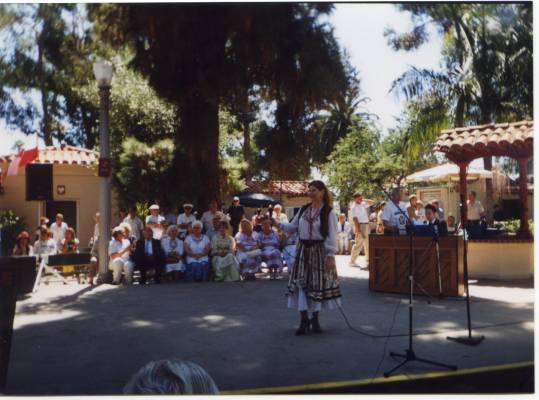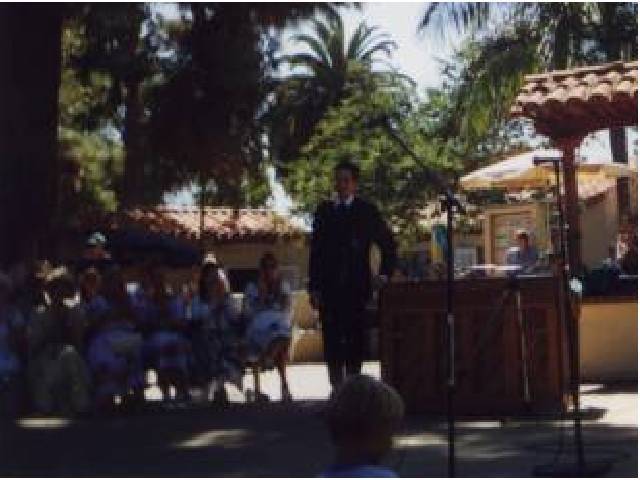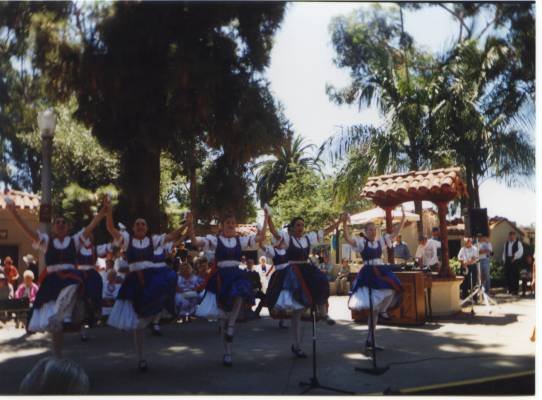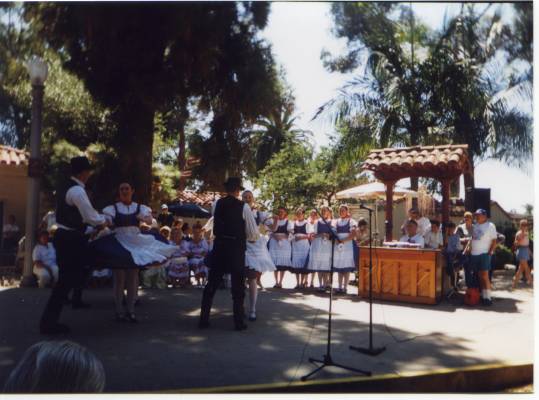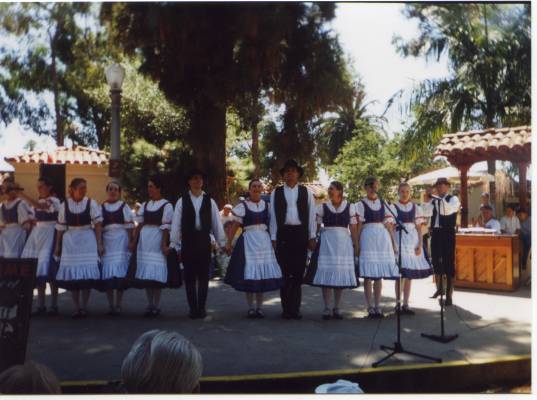Szent István ünnepe - Lawn Program - 8/15/1999
Verőfényes augusztusi vasárnapon a Balboa Park nagy nyilvánossága előtt ünnepeltük államalapító első királyunk, Szent István napját. Díszmagyarba öltözött asszonyok kísérték fel a zászlóvivőket a színpadra, ahol Durbeck Klára művésznő elénekelte a Himnuszt Bojnecz Gábor zongorakíséretével. Az gondolatébresztő ünnepi beszédet, melyet szintén ezen a lapon olvashatnak, Sándor Emese mondta el. Ezután a Kárpátok népi együttes adott elő különféle magyar táncokat, a San Diego-i publikum először láthatta a szép népviseletbe öltözött lányok és legények produkcióját. Műsoruk szünetében Durbeck Klára énekelt néhány operett-áriát, és Bojnecz Gábor a "Hazám, hazám" c. dalt Erkel Bánk Bánjából, saját zongorakíséretével. A fiatal tehetséges zongorista nagy sikerrel szólaltatta meg továbbá Brahms 5. és 6. magyar táncát is. A műsorvezető Lucy Renko a program végén meghívta a népes nézősereget a Magyar Házba, ahol hagyományos nemzeti ételeinket kóstolhatták meg a látogatók. Köszönjük a szereplőknek a közreműködést és Tota Imrének a színvonalas rendezést.
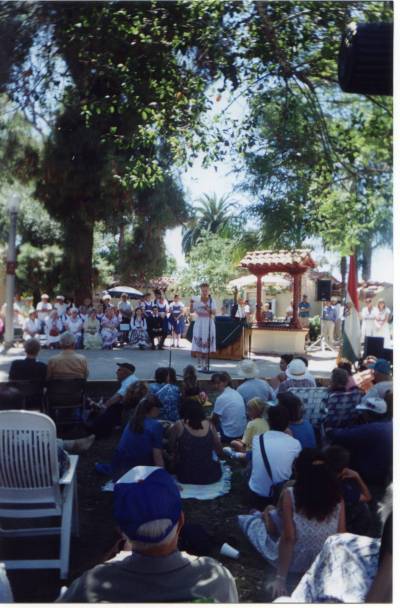
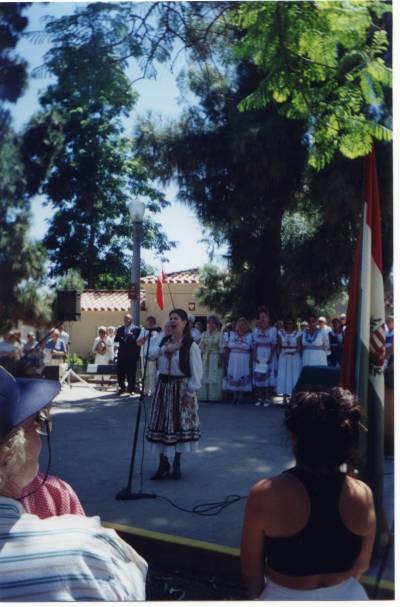
THE LEGACY OF ST. STEVEN
We, the descendants of the Magyar Tribes, around Aug. 20th of every year, commemorate the Day of St. Steven. He was the first king and founding father of Hungary from the Árpád Dynasty. St. Steven reigned in the beginning of the first millenium, from 997-1038 AD. He was an enlightened, pragmatic ruler who converted the pagan, Magyar tribes into a Christian nation.
He requested a crown from Pope Sylvester II: and crowned himself as king in 1000 AD. He offered his country into the grace of the Virgin Mary; thus Hungary became the Land of Mary. His crown had a double significance; on the one hand, it meant that the Hungarian king was spiritually bonded with the Pope; and on the other hand, it meant that he was not a vassal of the German nor the Byzantine emperor.
King Steven commissioned numerous German and Italian missionaries to help indoctrinate the Magyars in Christianity and Western literacy. He converted these nomadic clans into an agrarian society. He established good relations with neighboring countries and strengthened his empire by marrying the German princess Gizella. He enforced his laws upon the tribal leaders with an iron hand.
His goal was to unify the Hungarians into a strong, centralized, independent and Christian nation. He accomplished the establishment of private property, governmental and religious institutions. He built churches and created dioceses. He appointed representatives of the people to advise him on proposed legislation before decision making; and preserved the ancient laws and laid down the basis for Christian trials, criminal and civil codes.
King Steven died in 1038 and was canonized as a saint in 1083 AD. For centuries, following his death, on Aug. 20th at Székesfehérvár; where the capital was at that time; Hungarian kings held a Legislative Forum or People's Court where they listened and judged the cases of their constituents individually. That was the beginning of the parliament and democracy W action! His embalmed right hand was displayed there. Thousands of people participated at these events with their reigning monarch and bowed solemnly to honor the great, deceased king, St. Steven.
His greatest historical merit was to secure the existence, the continuation and the distinctness of a unified Hungarian nation. Hungary became a modern, Christian and European state under his rule, and was able to survive the turbulent upheavals of the centuries. Hungary did survive the most recent peril, communism. To transcend and exist in the next millenium, the Hungarian nation has to abide by &. Cherish God's commandments. As a native born American of Hungarian descent, I call upon the Hungarian mothers and fathers to instill, teach, and reinforce the legacy of St. Steven upon their progeny; so that spiritualism will replace materialism, love will replace hate, tranquility will replace dissension; and then unity and peace will rule the nation!
"GOD BLESS THE HUNGARIAN NATION!"
"ISTEN ÁLLD MEG A MAGYART!"
Written and recited by Emese Margaret Sandor
